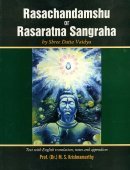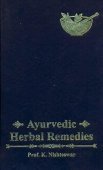Rajayakshma, Rajan-yakshma, Rājayakṣma, Rājayakṣmā: 16 definitions
Introduction:
Rajayakshma means something in Hinduism, Sanskrit, Marathi, Tamil. If you want to know the exact meaning, history, etymology or English translation of this term then check out the descriptions on this page. Add your comment or reference to a book if you want to contribute to this summary article.
The Sanskrit terms Rājayakṣma and Rājayakṣmā can be transliterated into English as Rajayaksma or Rajayakshma, using the IAST transliteration scheme (?).
In Hinduism
Purana and Itihasa (epic history)
Source: Cologne Digital Sanskrit Dictionaries: The Purana Index1) Rājayakṣma (राजयक्ष्म).—Smitten by this, Soma was relieved by his father, Atri.*
- * Brahmāṇḍa-purāṇa III. 65. 46-8.
2) Rājayakṣmā (राजयक्ष्मा).—To be worshipped in house-building.*
- * Matsya-purāṇa 253. 30, 42; 268. 23.

The Purana (पुराण, purāṇas) refers to Sanskrit literature preserving ancient India’s vast cultural history, including historical legends, religious ceremonies, various arts and sciences. The eighteen mahapuranas total over 400,000 shlokas (metrical couplets) and date to at least several centuries BCE.
Ayurveda (science of life)
Rasashastra (Alchemy and Herbo-Mineral preparations)
Source: Wisdom Library: Rasa-śāstraRājayakṣma (राजयक्ष्म) refers to “phthisis” or “consumption” according to the fifth volume of the Rasajalanidhi (chapter 2). Accordingly, “this disease (rajayakshma) is due to waste, caused by an excess of loss of semen, grief, senility, physical exercise, diseases affecting the belly, carbuncles or boils, suppression of calls of nature, rupture or wound in the lungs, and fool-hardiness. In this disease, the passages through which the chyle passes, are blocked by the three dosas, dominated by phlegm, with the result that the dhatus or the constituent parts of the body undergo waste (sometimes slowly and sometimes rapidly)”.
Unclassified Ayurveda definitions
Source: Google Books: Ṣoḍaśāṅgahṛdayam: Essentials of AyurvedaRājayakṣmā (राजयक्ष्मा, “consumption”) is produced by tridoṣa vitiated by suppression of urges, loss of dhātus, excessive exertion and irregular diet. In this vāta produces hoarseness of voice, contraction and pain in chest and shoulder; pitta gives rise to burning sensation, fever, diarrhoea and haemorrhage and kapha contributes to heaviness in head, anorexia, cough and choking of throat. Thus all these symptoms collectively characterize rājayakṣmā.
Source: archive.org: Science And Technology In Medievel India (Ayurveda)Rājayakṣmā (राजयक्ष्मा) refers to “phthisis” and is one of the various diseases dealt with in the Dhanvantarīyapathyāpathya, as is mentioned in A. Rahman’s Science and Technology in Medievel India: A bibliography of source materials in Sanskrit, Arabic and Persian.—Ancient and medieval India produced a wide range of scientific manuscripts and major contributions lie in the field of medicine, astronomy and mathematics, besides covering encyclopedic glossaries and technical dictionaries.—The Dhanvantarīyapathyāpathya deals with the treatment of various diseases [e.g., Rājayakṣmā]. The word pathyāpathya classifies those elements as either beneficial or hurtful in disease.
Source: Research Gate: Internal applications of Vatsanabha (Aconitum ferox wall)Rājayakṣmā (राजयक्ष्मा) refers to “tuberculosis” (an infectious disease usually caused by Mycobacterium tuberculosis). Medicinal formulations in the management of this condition include 49 references of Vatsanābha usages. Guṭikā is maximum (28) dosage form in the management of Rājayakṣmā. Vatsanābha (Aconitum ferox), although categorized as sthāvara-viṣa (vegetable poisons), has been extensively used in ayurvedic pharmacopoeia.

Āyurveda (आयुर्वेद, ayurveda) is a branch of Indian science dealing with medicine, herbalism, taxology, anatomy, surgery, alchemy and related topics. Traditional practice of Āyurveda in ancient India dates back to at least the first millenium BC. Literature is commonly written in Sanskrit using various poetic metres.
Shaivism (Shaiva philosophy)
Source: Google books: Genesis and Development of TantraRājayakṣma (राजयक्ष्म) refers to “(concord) against consumption” and represents one of the various objectives expected of the Kāmyeṣṭis (“Vedic rituals following the basic pattern of the new and full-moon sacrifice”).—There is a certain group of Vedic rituals which are referred to as “kāmya”. Those which are performed following the basic pattern of the new and full-moon sacrifice are called kāmyeṣṭi. [...] According to the analysis of W. Caland, the objectives expected of the kāmyeṣṭis are: [e.g., (concord) against consumption (rājayakṣma)] [...], etc. (Cf. Caland 1908: VI–VII). Although Vedic rituals were a reliable way for the people of ancient India to fulfill their objectives, Tantric rites too claim to bring about the attainment of wishes.

Shaiva (शैव, śaiva) or Shaivism (śaivism) represents a tradition of Hinduism worshiping Shiva as the supreme being. Closely related to Shaktism, Shaiva literature includes a range of scriptures, including Tantras, while the root of this tradition may be traced back to the ancient Vedas.
General definition (in Hinduism)
Source: archive.org: Vedic index of Names and SubjectsRājayakṣma (राजयक्ष्म, “royal sickness”) is mentioned in the Rigveda and several times later on. Zimmer identifies it with consumption: this identification seems certain, being supported by the later view of the disease. Bloomfield suggests “king’s evil”, or syphilis, as the sense, but this is not probable.
Languages of India and abroad
Marathi-English dictionary
Source: DDSA: The Molesworth Marathi and English Dictionaryrājayakṣmā (राजयक्ष्मा).—m S Pulmonary consumption.
Marathi is an Indo-European language having over 70 million native speakers people in (predominantly) Maharashtra India. Marathi, like many other Indo-Aryan languages, evolved from early forms of Prakrit, which itself is a subset of Sanskrit, one of the most ancient languages of the world.
Sanskrit dictionary
Source: DDSA: The practical Sanskrit-English dictionaryRājayakṣma (राजयक्ष्म).—m. 'consumption of the moon', pulmonary consumption, consumption in general; राजयक्ष्मपरिहानिराययौ कामयानसमवस्थया तुलाम् (rājayakṣmaparihānirāyayau kāmayānasamavasthayā tulām) R.19.5; राजयक्ष्मेव रोगाणां समूहः स महीभृताम् (rājayakṣmeva rogāṇāṃ samūhaḥ sa mahībhṛtām) Śiśupālavadha 2.96; (for explanation of the word see Malli. thereon, as well as on Śi. 13.29).
Derivable forms: rājayakṣmaḥ (राजयक्ष्मः).
Rājayakṣma is a Sanskrit compound consisting of the terms rājan and yakṣma (यक्ष्म). See also (synonyms): rājayakṣman.
Source: Cologne Digital Sanskrit Dictionaries: Benfey Sanskrit-English DictionaryRājayakṣma (राजयक्ष्म).—m. the same.
Rājayakṣma is a Sanskrit compound consisting of the terms rājan and yakṣma (यक्ष्म).
Source: Cologne Digital Sanskrit Dictionaries: Cappeller Sanskrit-English DictionaryRājayakṣma (राजयक्ष्म).—[masculine] a kind of disease.
Source: Cologne Digital Sanskrit Dictionaries: Monier-Williams Sanskrit-English DictionaryRājayakṣma (राजयक्ष्म):—[=rāja-yakṣma] [from rāja > rāj] m. a [particular] kind of dangerous disease (later ‘pulmonary consumption, a trophy’), [Ṛg-veda] etc. etc. (-yakṣman, also ‘Name of a divine being’ [Hemādri’s Caturvarga-cintāmaṇi])
[Sanskrit to German]
Sanskrit, also spelled संस्कृतम् (saṃskṛtam), is an ancient language of India commonly seen as the grandmother of the Indo-European language family (even English!). Closely allied with Prakrit and Pali, Sanskrit is more exhaustive in both grammar and terms and has the most extensive collection of literature in the world, greatly surpassing its sister-languages Greek and Latin.
Kannada-English dictionary
Source: Alar: Kannada-English corpusRājayakṣma (ರಾಜಯಕ್ಷ್ಮ):—[noun] a kind of highly infectious disease of lungs; a dangerous pulmonary consumption.
Kannada is a Dravidian language (as opposed to the Indo-European language family) mainly spoken in the southwestern region of India.
Tamil dictionary
Source: DDSA: University of Madras: Tamil LexiconRājayakṣmā (ராஜயக்ஷ்மா) [rāja-yakṣmā] noun < idem. + yakṣmā. See ராஜநோய். [rajanoy.]
Tamil is an ancient language of India from the Dravidian family spoken by roughly 250 million people mainly in southern India and Sri Lanka.
See also (Relevant definitions)
Partial matches: Yakshma, Rajan, Raja.
Starts with: Rajayakshmagrihita, Rajayakshman, Rajayakshmanaman, Rajayakshmannaman.
Ends with: Palatha Rajayakshma.
Full-text (+31): Rajayakshmanaman, Yakshma, Rajayakshmin, Maharoga, Palatha Rajayakshma, Rajayakshmagrihita, Angajvara, Svarna, Rajayakshman, Ajnatayakshma, Sarvangasundara, Prananatha, Kshayakeshari, Kalyanasundarabhra, Kshemendrarasa, Lokeshvararasa, Bhuvaneshvaraparpati, Rajamriganka, Yakshmantaka, Vamadevarasa.
Relevant text
Search found 17 books and stories containing Rajayakshma, Raja-yaksma, Rajan-yakshma, Rājayakṣma, Rajan-yaksma, Rājayakṣmā, Rājan-yakṣma, Rāja-yakṣma, Rāja-yakṣmā, Rajayaksma, Raja-yakshma, Rājan-yakṣmā, Raajayagshmaa, Rajayagshma; (plurals include: Rajayakshmas, yaksmas, yakshmas, Rājayakṣmas, Rājayakṣmās, yakṣmas, yakṣmās, Rajayaksmas, Raajayagshmaas, Rajayagshmas). You can also click to the full overview containing English textual excerpts. Below are direct links for the most relevant articles:
Atharvaveda and Charaka Samhita (by Laxmi Maji)
Treatment of Yakṣma disease—Synopsis < [Chapter 3 - Diseases and Remedial measures (described in Atharvaveda)]
2a. Tuberculosis (Yakṣmā or Rājayakṣmā) in the Atharvaveda < [Chapter 5 - Diseases and Remedies in Atharvaveda and Caraka-Saṃhitā]
2b. Tuberculosis (Yakṣmā or Rājayakṣmā) in the Caraka-Saṃhita < [Chapter 5 - Diseases and Remedies in Atharvaveda and Caraka-Saṃhitā]
The Garuda Purana (by Manmatha Nath Dutt)
Chapter CLII - The Nidanam of pulmonary consumption < [Dhanvantari Samhita]
Chapter XLVI - Adoration of the deity presiding over homesteads (Vastu) < [Agastya Samhita]
Chapter CXLIX - The Nidanam of Cough < [Dhanvantari Samhita]
Jivanandana of Anandaraya Makhin (Study) (by G. D. Jayalakshmi)
Rajayakṣmā-Pratināyaka < [Chapter 4 - Āyurvedic principles in Jīvanandana Nāṭaka]
Analysis of Rajayakṣmā (Pratināyaka) < [Chapter 6 - Dramatic aspects of the Jīvanandana Nāṭaka]
Āyurvedic aspects of Act I < [Chapter 4 - Āyurvedic principles in Jīvanandana Nāṭaka]
Expiatory Rites in Keralite Tantra (by T. S. Syamkumar)
4.2. Diseases and Expiatory Rites < [Chapter 1 - Expiatory Rites: Concept and Evolution]
Charaka Samhita (English translation) (by Shree Gulabkunverba Ayurvedic Society)
Chapter 8 - The therapeutics of Consumption (raja-yakshma-cikitsa) < [Cikitsasthana (Cikitsa Sthana) — Section on Therapeutics]
Taittiriya Upanishad Bhashya Vartika (by R. Balasubramanian)
Verse 2.742 < [Book 2 - Brahmavallī]
Related products


